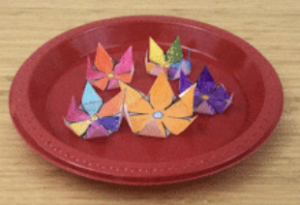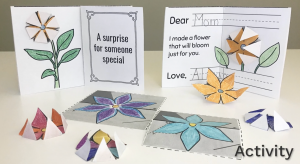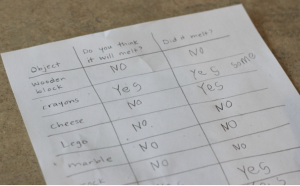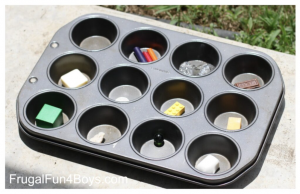 Spring is in the air! Learn about the blooming power of flowers and then do a hands-on activity creating a blooming flower and card to give to someone special.
Spring is in the air! Learn about the blooming power of flowers and then do a hands-on activity creating a blooming flower and card to give to someone special.
Spark your thinking!
1. Set up your early enrichment mini spark recording page: #67: Flower Power
2. Watch this Mystery Science video about how flowers bloom. Record 3 things you learned on your recording page.
3. Set a timer for 2 minutes. Brainstorm as many types of flowers as you can and write the names on your recording page.
4. Look over this list of flowers. Add a 5 more flower names to your list.
5. Share your early enrichment mini spark recording page with your teacher/EY coordinator.
OPTIONAL: Make a colorful paper flower and a greeting card to give to a special person. When placed in water, the paper flower will unfold, appearing to move and bloom in front of your eyes! You may want to use this as a Mother’s Day activity, but you choose who will receive the card, so it can be for anyone special.
Gather needed materials to complete the card making activity
- Crayons
- Scissors
- Dot Stickers or Tape
- Plastic Paper Plate or Bowl
- Print this template single sided. Ask your teacher for help if needed.
6. Follow the step-by-step instructions on the paper.
7. When you give your card, explain that you will need to your place the flowers in water and you can watch them bloom together!

















 Möbius strip, a one-sided surface that can be constructed by affixing the ends of a rectangular strip after first having given one of the ends a one-half twist.
Möbius strip, a one-sided surface that can be constructed by affixing the ends of a rectangular strip after first having given one of the ends a one-half twist.
